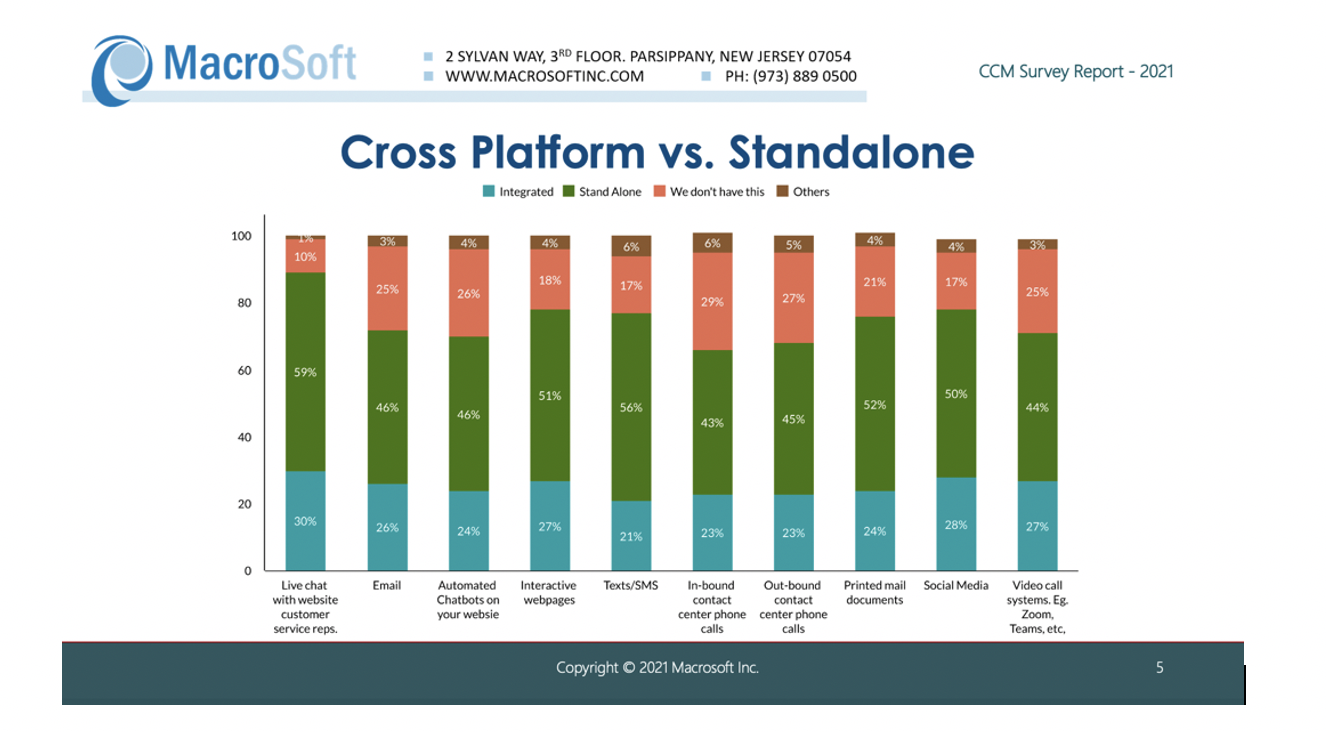As a leading solution and service provider in the Customer Communications Management (CCM) market, Macrosoft is committed to building great applications using the most recent data in the marketplace.
As part of their customer-focused strategy, they collect their own CCM survey data and present it back to the industry. Macrosoft’s 2021 survey presents the input of nearly 600 organizations like yours to help inform your future communication strategy. This blog series explores three topics in depth. You can also learn more in the report and watch the webinar exploring these concepts on-demand (in case you missed it.)
The first blog post in this series examines how enterprises are managing their mix of communication channels.

How are companies like yours delivering customer communications?
This important question delivered data on how enterprises manage customer communications across 10 critical channels. Before we dig into the differences in standalone versus integrated communication channel management, let’s look at the orange area that indicates channels that are wholly unsupported by enterprises.
- 25% of respondents don’t manage email as a CCM function at all
- 26% do not support automated chatbots
- 29% do not include CCM for their inbound contact centers
- 66% of respondents indicate that nearly all communication channels are separately managed by a standalone infrastructure.
This is a clear indicator that this work, likely being performed by people who are unaware of the larger communication portfolio, is resulting in disconnected customer communications. In turn, including these communications in an actively managed customer experience portfolio is difficult.
Inefficient customer communications management equals redundant spending
For CCM practitioners, these answers clearly demonstrate a root cause of poor customer experience and inefficient program management. For businesses, this means redundant spend and effort. This redundancy leads to difficult scheduling (at best) and disconnected customer experiences (at worst.) Confusing customers is an easy way to add hidden costs to your communication technology. This is because customers moving from low-cost SMS, Chatbot, SMS, web, email or print interactions to more expensive processes involving contact center employees cost 50 to 200 times more than a single digital engagement.
Can you improve your customer communications?
As you look at the graphic from your perspective, consider how many of your processes are in the orange and green areas. These are opportunities to reduce spend while improving CX consistency. You may have a few channels in the teal section, which is a great start. As you consider your future, understand that any current channels that aren’t managed by an integrated system increase your overall integration expenses.
We will explore this in-depth in our webinar and you can learn more from the full report.
